Michael Armitage
Pathos and the Twilight of the Idle
15 Jul - 29 Oct 2023
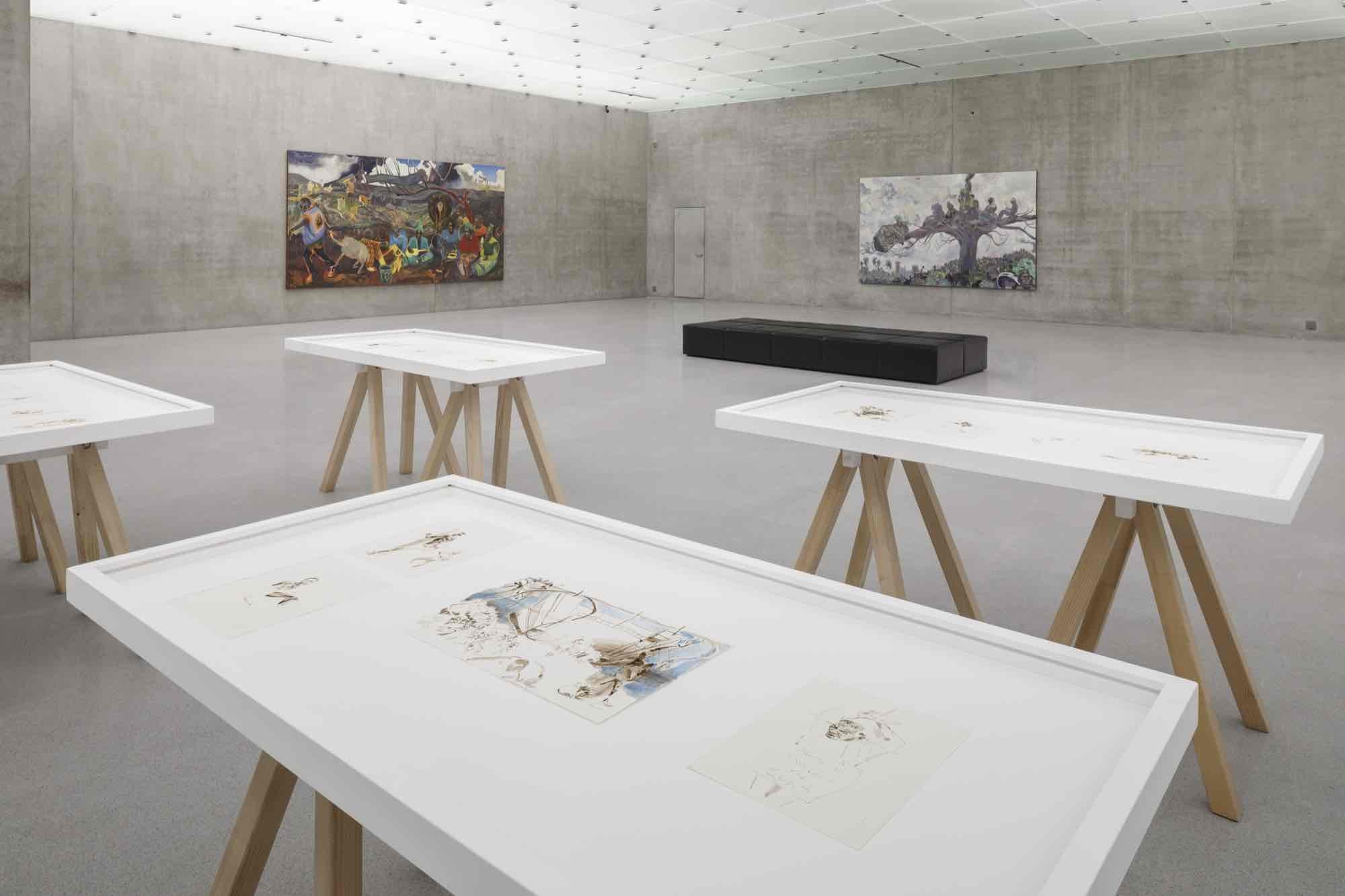
Michael Armitage
Installation view first floor Kunsthaus Bregenz, 2023
Photo: Markus Tretter
Courtesy of the artist, Pinault Collection and White Cube
© Michael Armitage, Kunsthaus Bregenz
Installation view first floor Kunsthaus Bregenz, 2023
Photo: Markus Tretter
Courtesy of the artist, Pinault Collection and White Cube
© Michael Armitage, Kunsthaus Bregenz
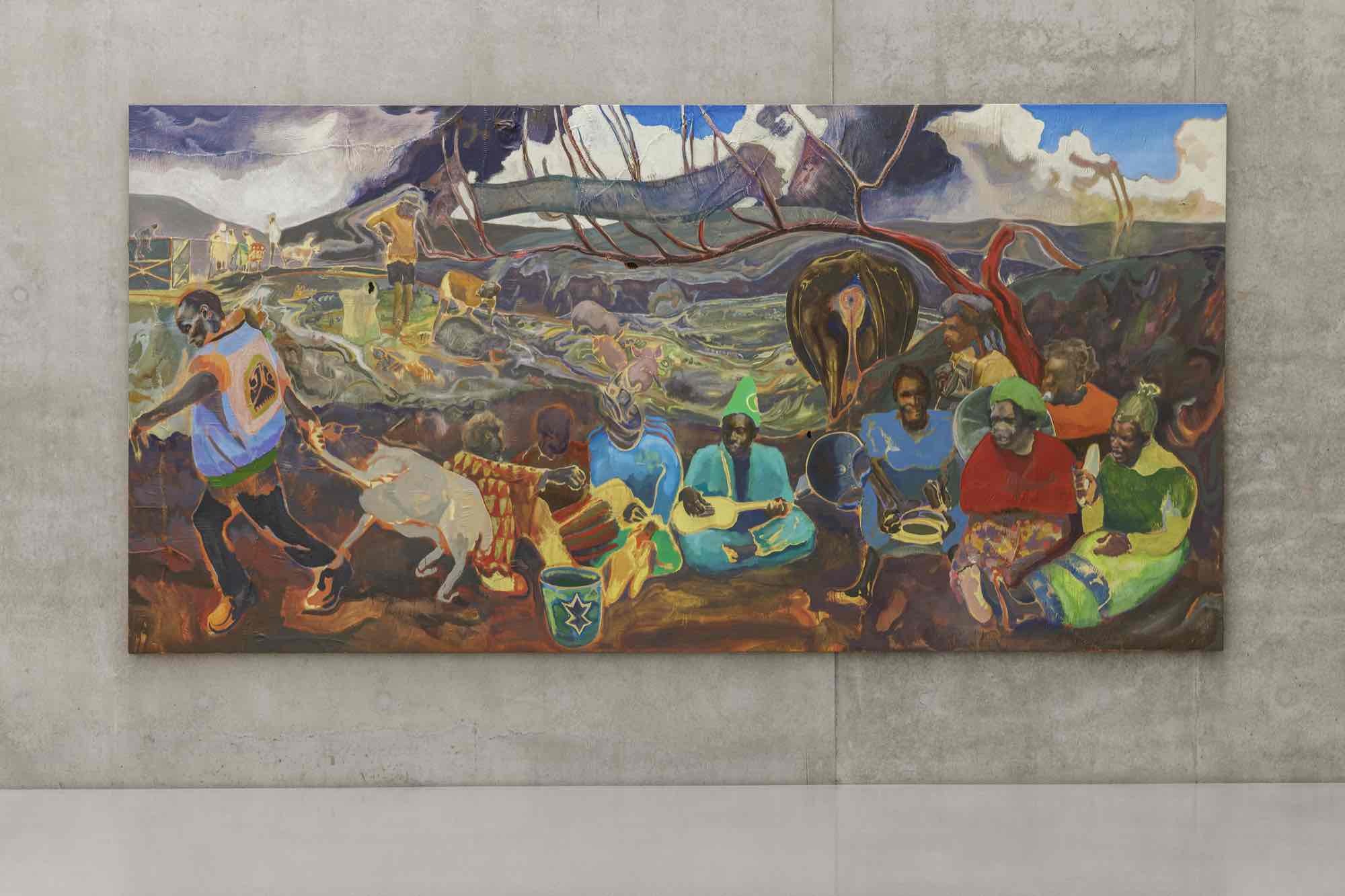
Michael Armitage
Dandora (Xala, Musicians), 2022
Installation view first floor Kunsthaus Bregenz, 2023
Photo: Markus Tretter
Courtesy of the artist and Pinault Collection
© Michael Armitage, Kunsthaus Bregenz
Dandora (Xala, Musicians), 2022
Installation view first floor Kunsthaus Bregenz, 2023
Photo: Markus Tretter
Courtesy of the artist and Pinault Collection
© Michael Armitage, Kunsthaus Bregenz
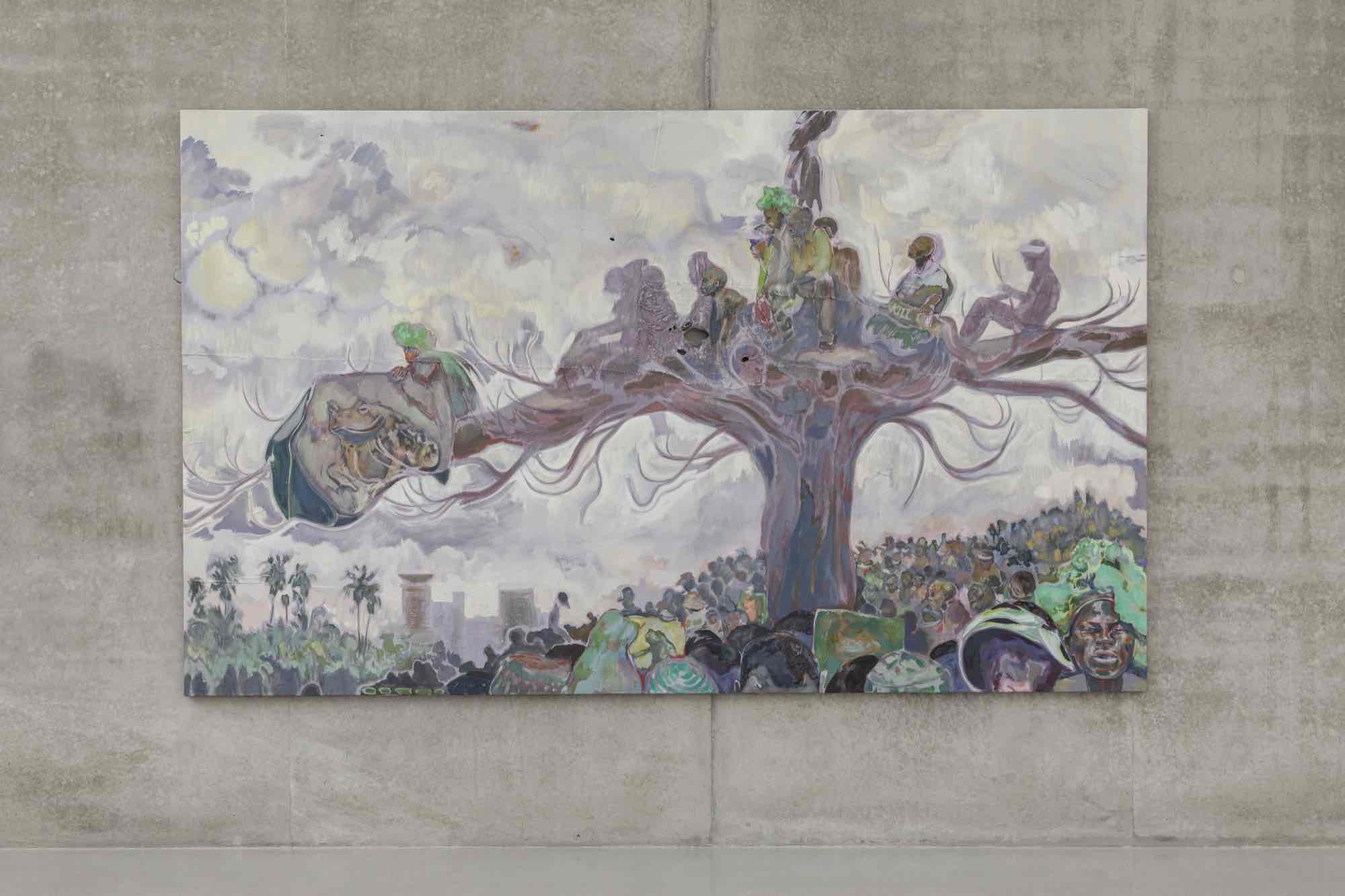
Michael Armitage
The Fourth Estate, 2017
Installation view first floor Kunsthaus Bregenz, 2023
Photo: Markus Tretter
Courtesy of the artist and The Joyner/Giuffrida Collection
© Michael Armitage, Kunsthaus Bregenz
The Fourth Estate, 2017
Installation view first floor Kunsthaus Bregenz, 2023
Photo: Markus Tretter
Courtesy of the artist and The Joyner/Giuffrida Collection
© Michael Armitage, Kunsthaus Bregenz
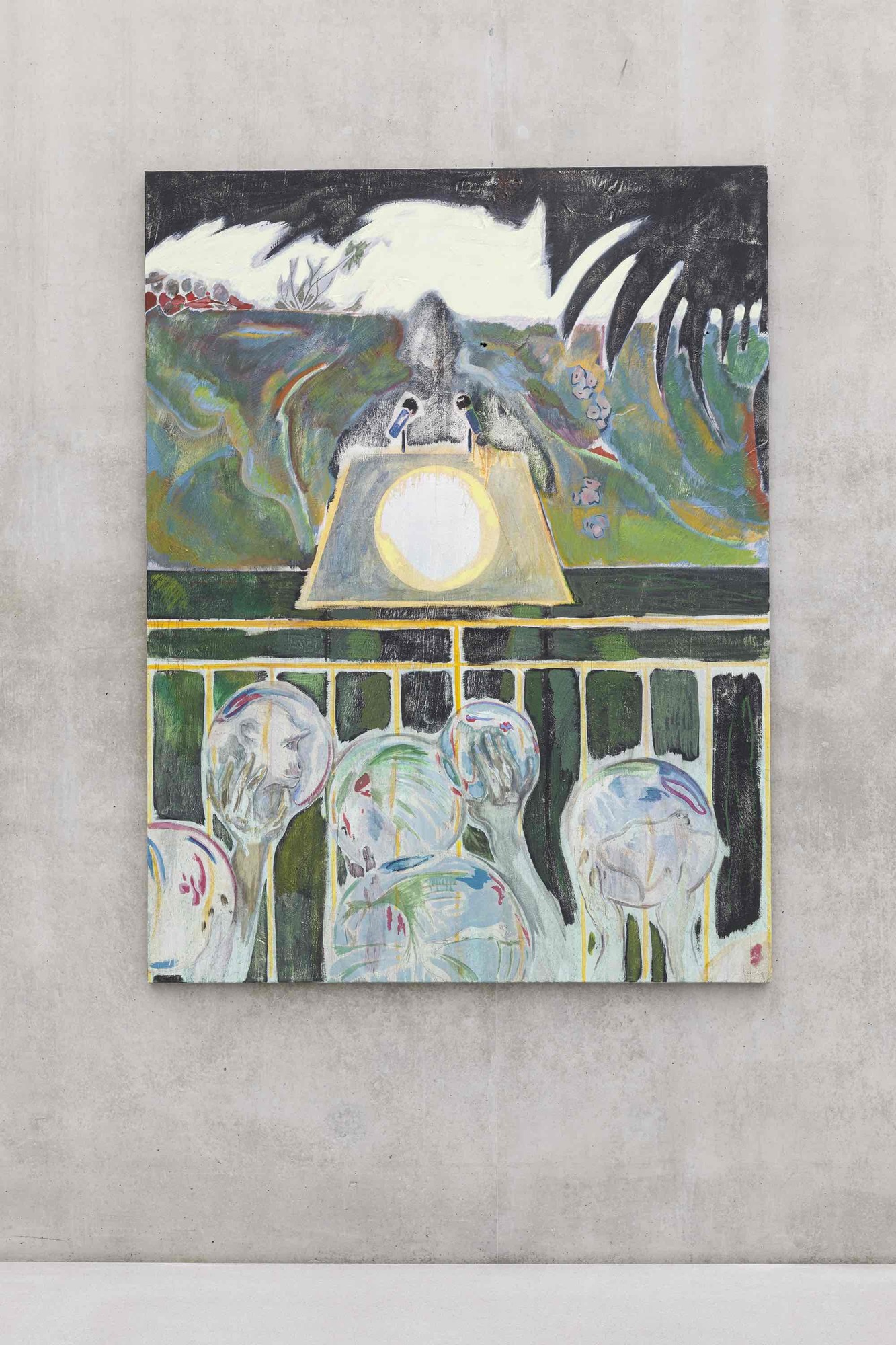
Michael Armitage
And so it is, 2015
Installation view first floor Kunsthaus Bregenz, 2023
Photo: Markus Tretter
Courtesy of the artist and KADIST Collection
© Michael Armitage, Kunsthaus Bregenz
And so it is, 2015
Installation view first floor Kunsthaus Bregenz, 2023
Photo: Markus Tretter
Courtesy of the artist and KADIST Collection
© Michael Armitage, Kunsthaus Bregenz
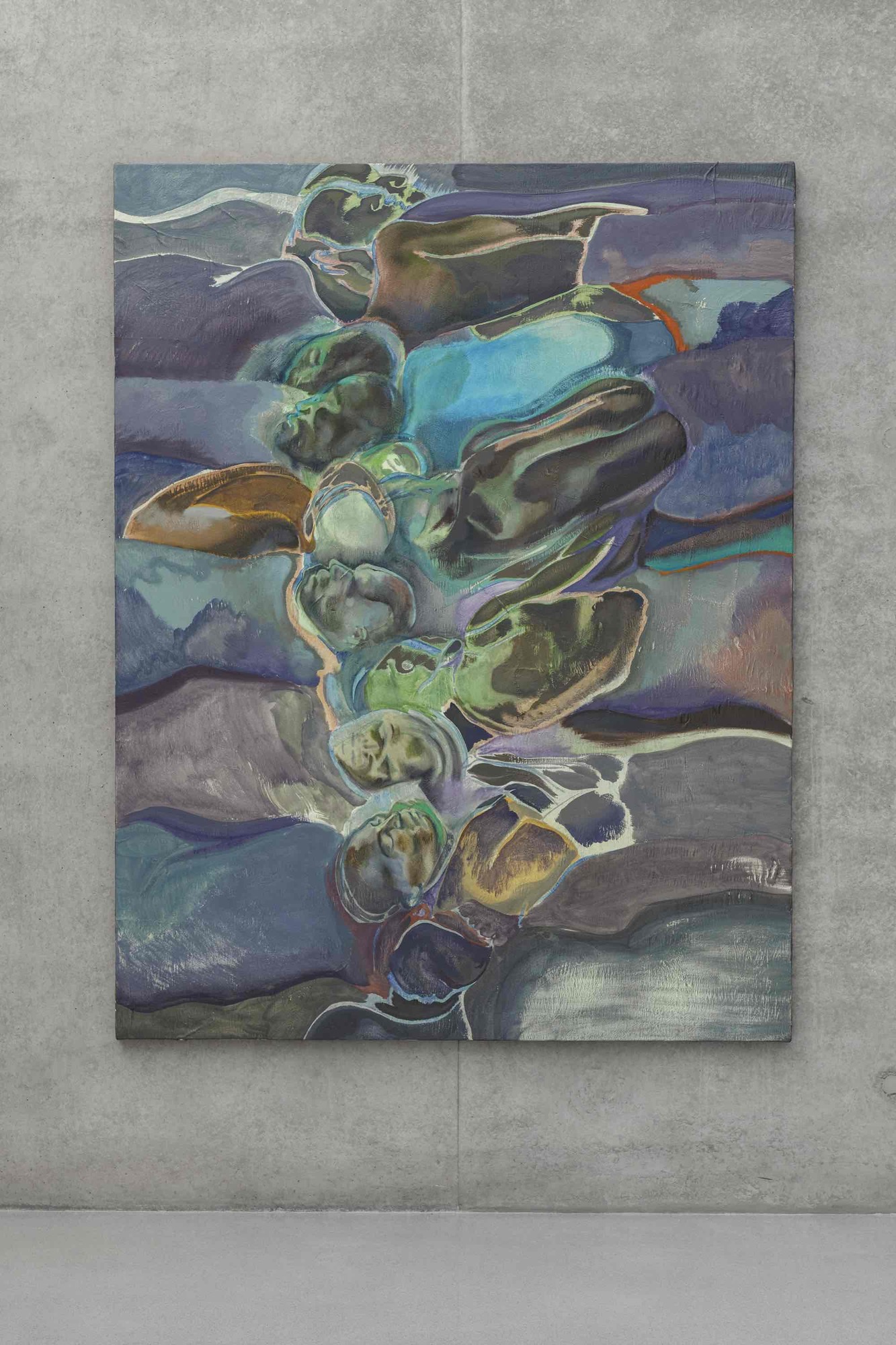
Michael Armitage
Holding Cell, 2021
Installation view first floor Kunsthaus Bregenz, 2023
Photo: Markus Tretter
Courtesy of the artist and White Cube
© Michael Armitage, Kunsthaus Bregenz
Holding Cell, 2021
Installation view first floor Kunsthaus Bregenz, 2023
Photo: Markus Tretter
Courtesy of the artist and White Cube
© Michael Armitage, Kunsthaus Bregenz
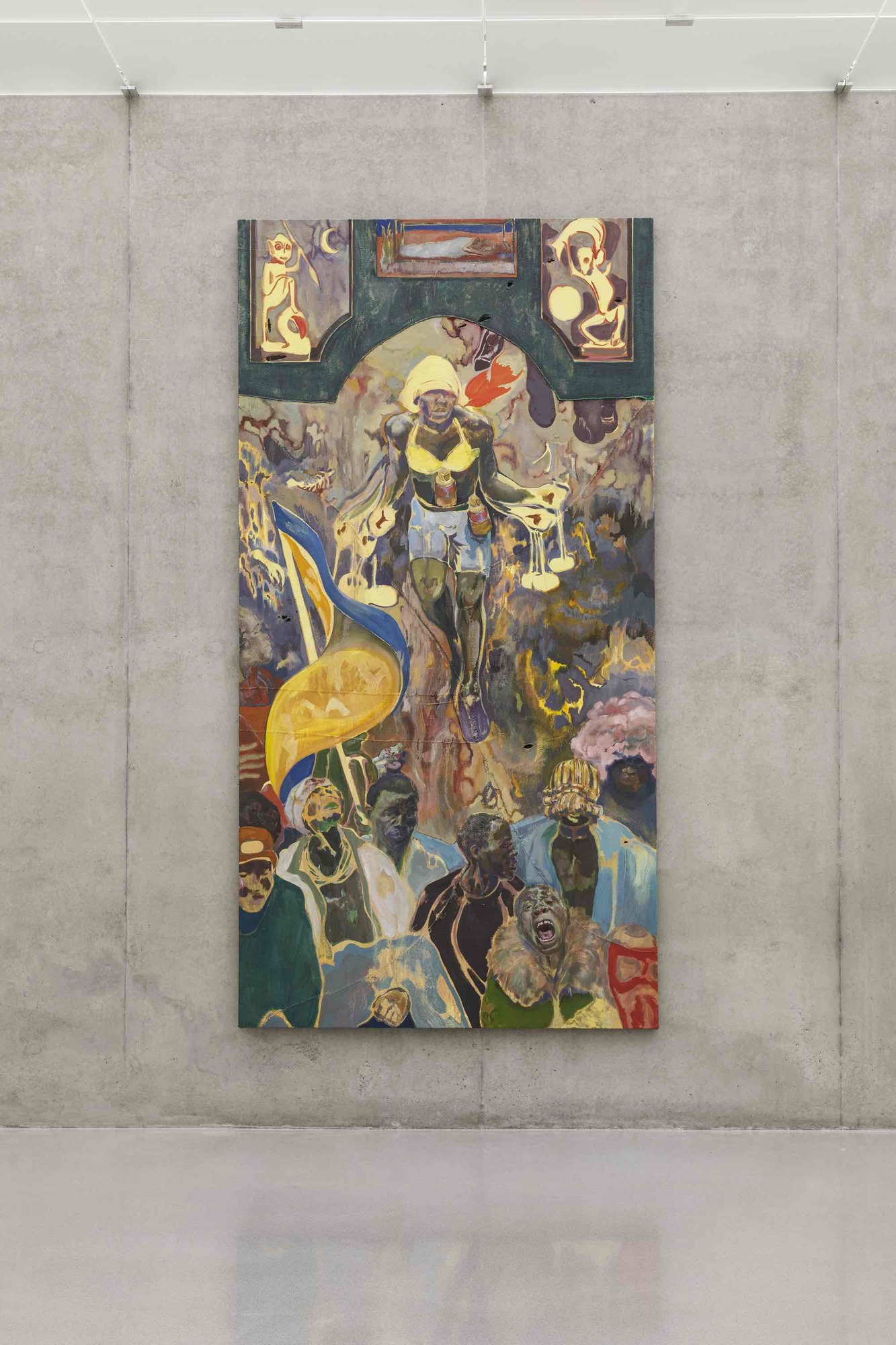
Michael Armitage
Pathos and the twilight of the idle, 2019
Installation view first floor Kunsthaus Bregenz, 2023
Photo: Markus Tretter
Courtesy of the artist and Los Angeles County Museum of Art, purchased with funds provided by Paul Attanasio
© Michael Armitage, Kunsthaus Bregenz
Pathos and the twilight of the idle, 2019
Installation view first floor Kunsthaus Bregenz, 2023
Photo: Markus Tretter
Courtesy of the artist and Los Angeles County Museum of Art, purchased with funds provided by Paul Attanasio
© Michael Armitage, Kunsthaus Bregenz
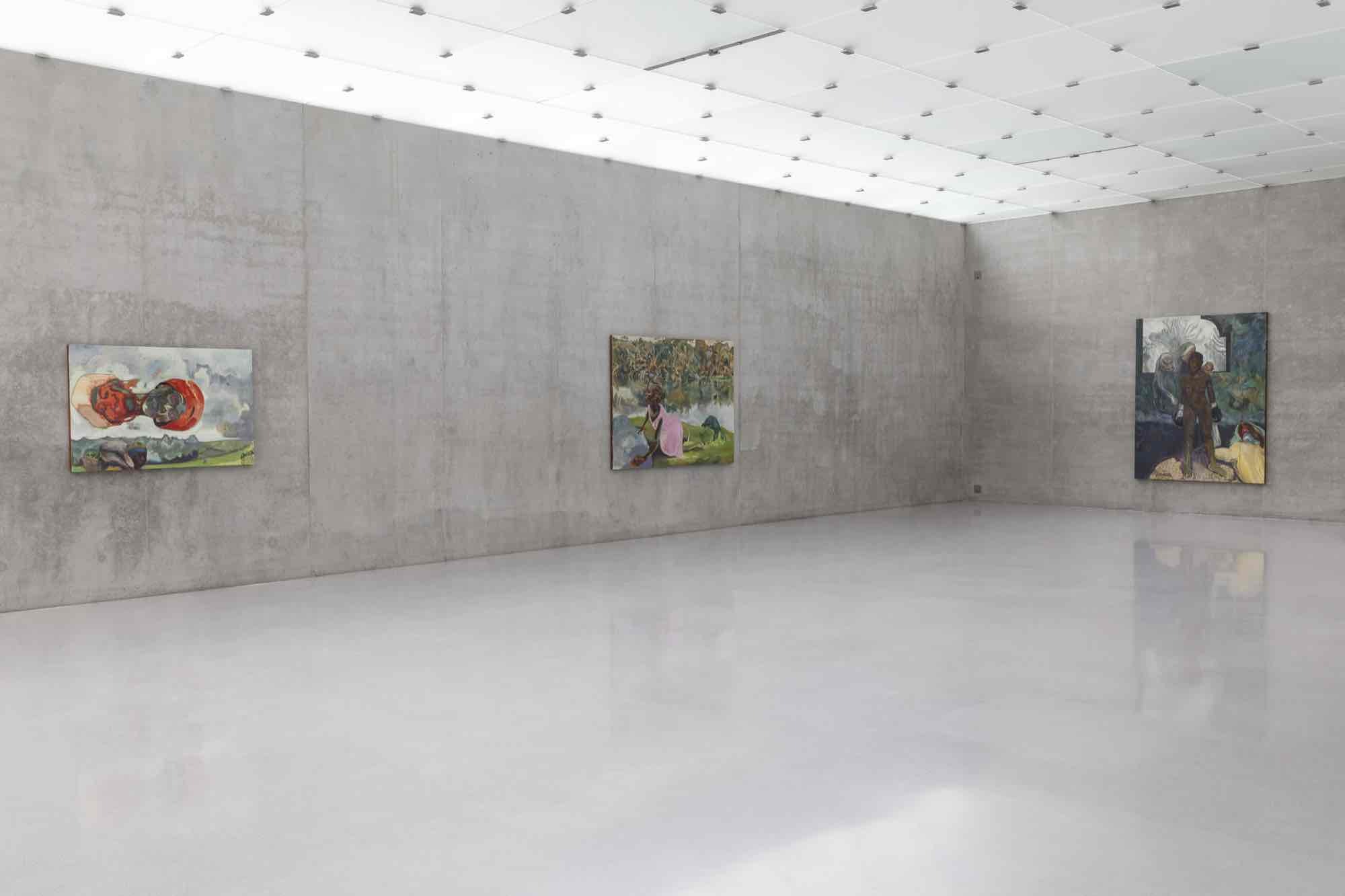
Michael Armitage
Installation view second floor Kunsthaus Bregenz, 2023
Photo: Markus Tretter
Courtesy of the artist, David Zwirner | Private Collection, San Francisco Museum of Modern Art, Collection SFMOMA, Accessions Committee Fund purchase and The George Economou Collection
© Michael Armitage, Kunsthaus Bregenz
Installation view second floor Kunsthaus Bregenz, 2023
Photo: Markus Tretter
Courtesy of the artist, David Zwirner | Private Collection, San Francisco Museum of Modern Art, Collection SFMOMA, Accessions Committee Fund purchase and The George Economou Collection
© Michael Armitage, Kunsthaus Bregenz
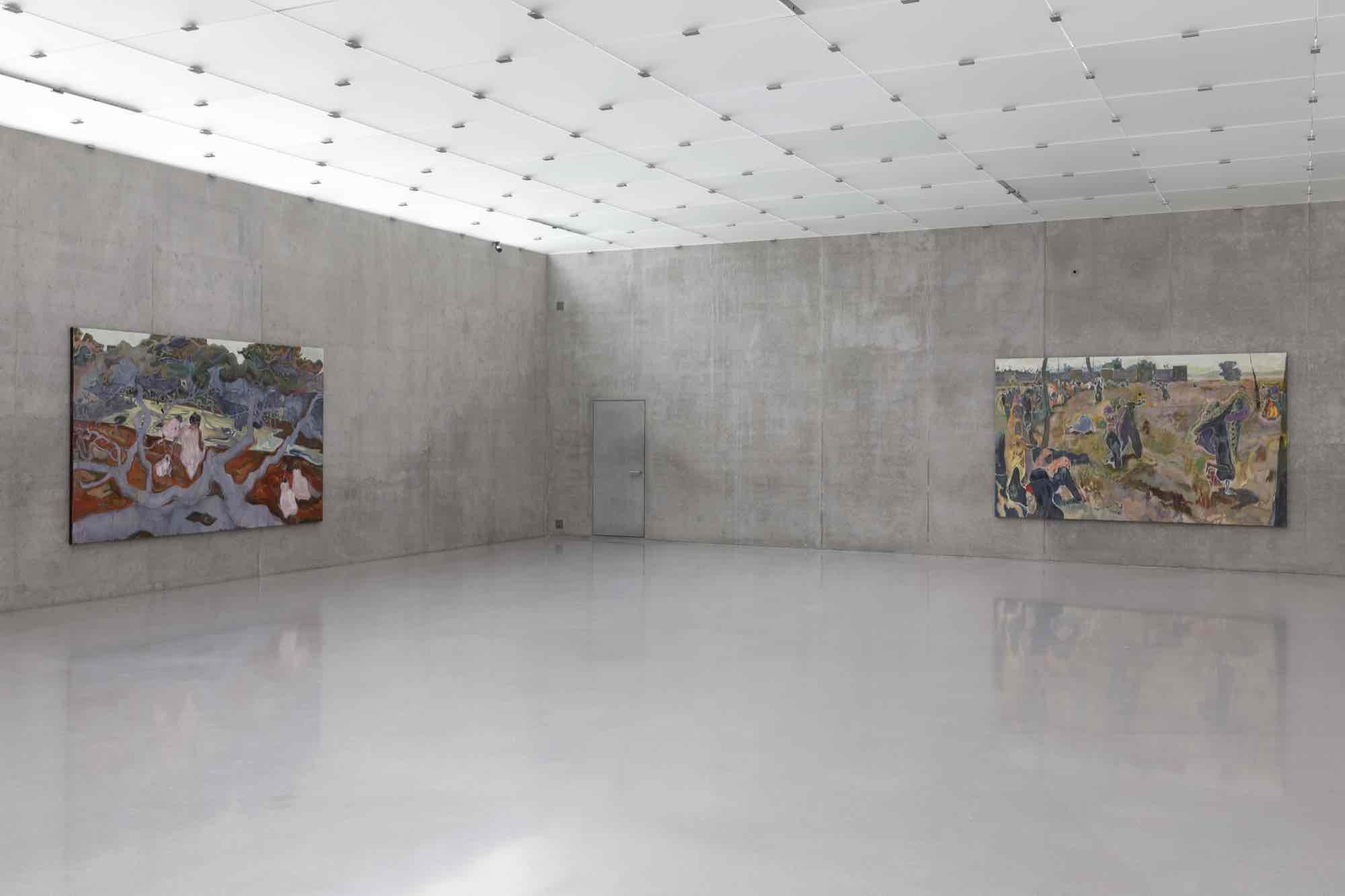
Michael Armitage
Installation view second floor Kunsthaus Bregenz, 2023
Photo: Markus Tretter
Courtesy of the artist, Harry G. David Collection and Collection of Yuz Foundation
© Michael Armitage, Kunsthaus Bregenz
Installation view second floor Kunsthaus Bregenz, 2023
Photo: Markus Tretter
Courtesy of the artist, Harry G. David Collection and Collection of Yuz Foundation
© Michael Armitage, Kunsthaus Bregenz
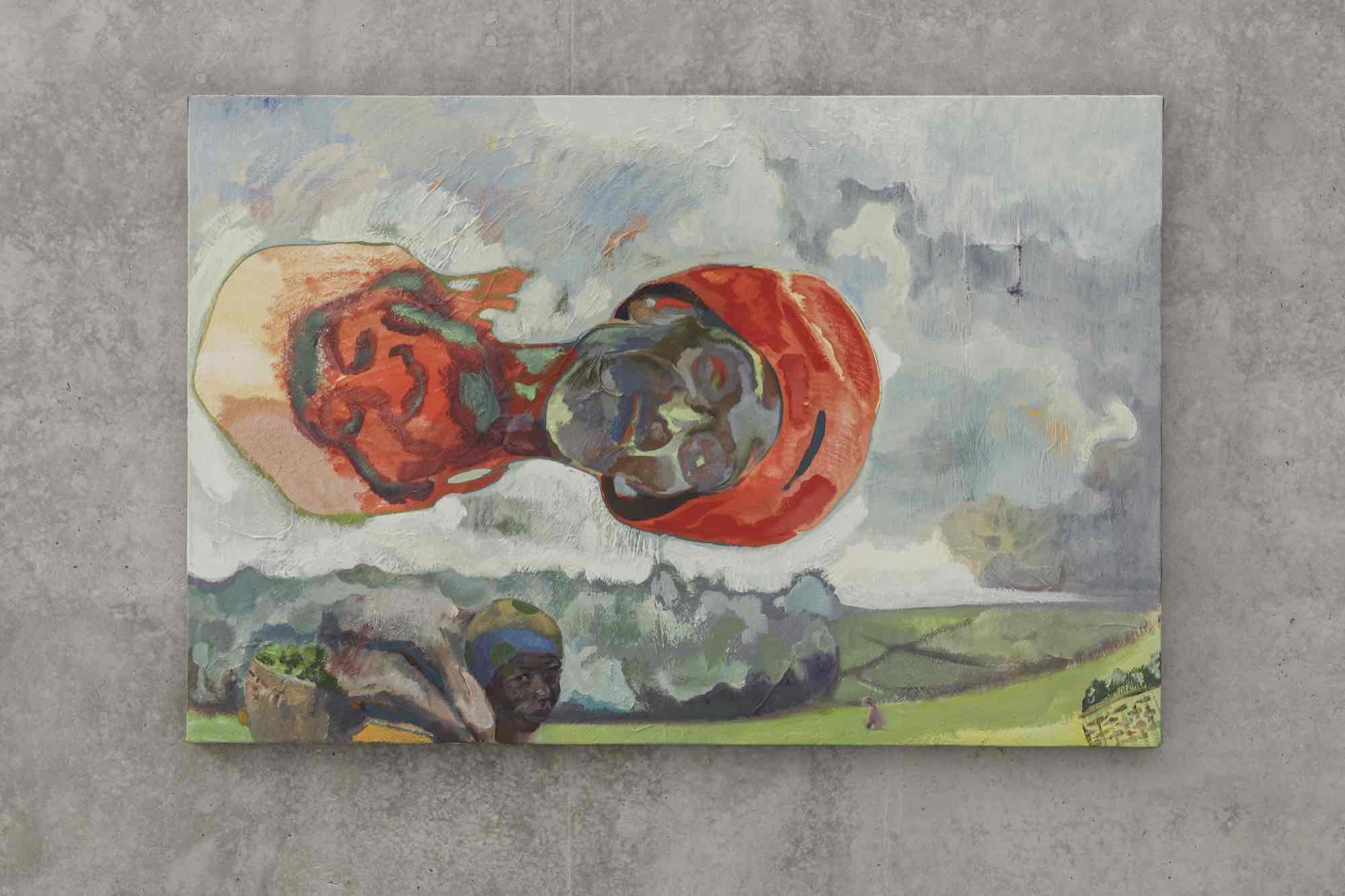
Michael Armitage
Tea Picker, 2023
Installation view second floor Kunsthaus Bregenz, 2023
Photo: Markus Tretter
Courtesy of the artist and David Zwirner
Private Collection
© Michael Armitage, Kunsthaus Bregenz
Tea Picker, 2023
Installation view second floor Kunsthaus Bregenz, 2023
Photo: Markus Tretter
Courtesy of the artist and David Zwirner
Private Collection
© Michael Armitage, Kunsthaus Bregenz
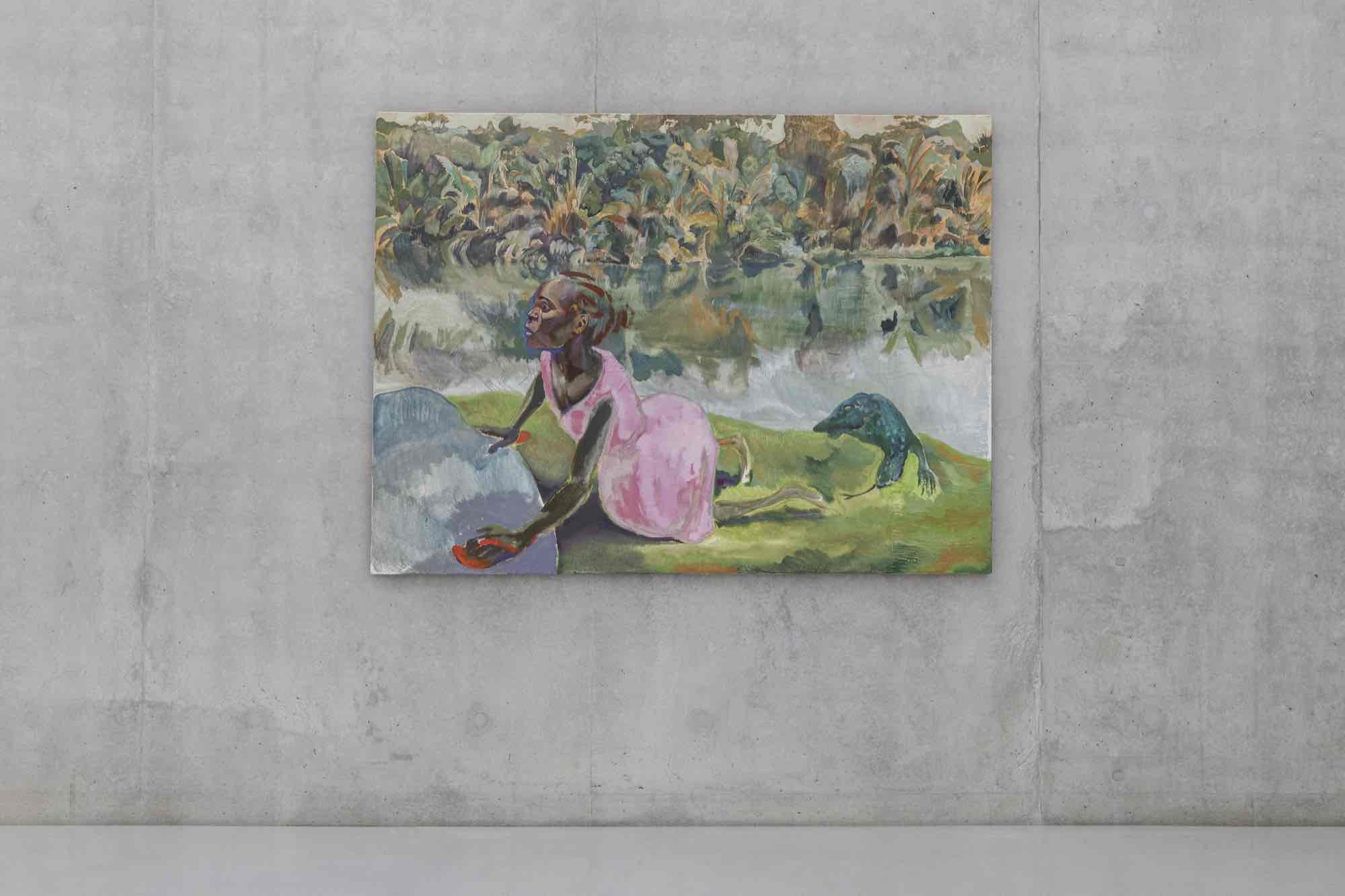
Michael Armitage
Warigia, 2022
Installation view second floor Kunsthaus Bregenz, 2023
Photo: Markus Tretter
Courtesy of the artist and The George Economou Collection
© Michael Armitage, Kunsthaus Bregenz
Warigia, 2022
Installation view second floor Kunsthaus Bregenz, 2023
Photo: Markus Tretter
Courtesy of the artist and The George Economou Collection
© Michael Armitage, Kunsthaus Bregenz
Michael Armitage is one of the most important painters of the present day. He gained recognition with large-scale paintings that depict figures in somnambulistic landscapes. In them, paint is applied in several layers, scraped off, and reworked anew. Armitage’s motifs are marked by history and current political events. He studies local rituals and political demonstrations, in addition to plant and animal life. Velvety on the surface and awash with formal beauty, his pictures possess an unsettling ambiguity.
One special feature of his paintings is the image carrier. Armitage uses bark cloth as a painting ground. To make it, the outer layer of bark from the Ugandan ficus tree is peeled off, lightly burned, and beaten smooth. In a complex process, the hard organic material is transformed into a supple, tensible cloth referred to as “Lubugo.” Armitage stitches pieces of the cloth together into substantial sizes. The seams remain visible underneath the paint layer; holes and irregularities also become part of the image.
Pathos and the twilight of the idle is the title of one of the artist’s works from 2019. It is a vertical-format painting of considerable size. In the center of the image is a figure that strides toward the viewer. His facial expression and hunched shoulders convey a certain readiness to accuse and fight. Attached to his chest and waist are two cans of tear gas. In his hands, which have strangely multiplied, he holds sandcolored slings. In the background, countless colors mushroom into one another. The artist created the painting after seeing a demonstration by Kenya’s largest opposition party in Nairobi in 2017. Several of the depicted demonstrators are dressed in a grotesque manner, donning costumes, wigs, or crowns. One person waves a flag. The muscular figure in the upper center wears a bikini top.
The British-Kenyan painter has said that he is more interested in people than in their leaders. In addition to current political topics, Armitage is also interested in forms of traditional religious imagery. The baldachin in the upper portion of the painting is reminiscent of an altar. In fact, the man laid out in the upper center of the picture is modeled on Hans Holbein’s The Body of the Dead Christ in the Tomb, 1521–22.
Armitage’s paintings are intensely colorful, rampant, and moving. Events and imaginings are woven together into rich narratives. Traditional motifs from European painting enter into the scenes, creating instances of déjà vu. Édouard Manet, Francisco de Goya, the Fauves, as well as R. B. Kitaj, Egon Schiele, and Paul Gauguin are recognizable in formal elements and the choice of colors.
In another large-scale picture, The Fourth Estate, 2017, the political demonstration – which took place in September 2017 is likewise depicted. Several of the demonstrators have climbed onto a tree. They are sitting on a branch fork as if in a nest. Visible in the background are palm trees and the Nairobi skyline. Although photographs served as the basis for the painting, surreal elements – like the toad on the flag –and once again references to Western art history come into play. Francisco de Goya likewise depicted a group of people sitting on a branch. His print is titled Ridiculous Folly, 1815–19.
Armitage’s painting takes its vitality from complementary colors – such as yellow and purple or salmon pink and green – and from its break with established ways of seeing. He depicts people close to the picture edge or from below. The inversion of perspective implies a reversal in the balance of power. The painter also gains motivation for his works from pictures and videos that he encounters on social media. Time and again, people are publicly condemned because of perceived weaknesses. One moving example is the case of the Kenyan boxer Conjestina Achieng. After the end of her career, the several-time boxing champion suffered from psychological problems. In Conjestina, 2017, Armitage shows the boxer naked and exposed. This is one way, the artist explains, to remind us of her vulnerability and represent the collective defamation that suspected her of embodying a malicious spirit.
One special feature of his paintings is the image carrier. Armitage uses bark cloth as a painting ground. To make it, the outer layer of bark from the Ugandan ficus tree is peeled off, lightly burned, and beaten smooth. In a complex process, the hard organic material is transformed into a supple, tensible cloth referred to as “Lubugo.” Armitage stitches pieces of the cloth together into substantial sizes. The seams remain visible underneath the paint layer; holes and irregularities also become part of the image.
Pathos and the twilight of the idle is the title of one of the artist’s works from 2019. It is a vertical-format painting of considerable size. In the center of the image is a figure that strides toward the viewer. His facial expression and hunched shoulders convey a certain readiness to accuse and fight. Attached to his chest and waist are two cans of tear gas. In his hands, which have strangely multiplied, he holds sandcolored slings. In the background, countless colors mushroom into one another. The artist created the painting after seeing a demonstration by Kenya’s largest opposition party in Nairobi in 2017. Several of the depicted demonstrators are dressed in a grotesque manner, donning costumes, wigs, or crowns. One person waves a flag. The muscular figure in the upper center wears a bikini top.
The British-Kenyan painter has said that he is more interested in people than in their leaders. In addition to current political topics, Armitage is also interested in forms of traditional religious imagery. The baldachin in the upper portion of the painting is reminiscent of an altar. In fact, the man laid out in the upper center of the picture is modeled on Hans Holbein’s The Body of the Dead Christ in the Tomb, 1521–22.
Armitage’s paintings are intensely colorful, rampant, and moving. Events and imaginings are woven together into rich narratives. Traditional motifs from European painting enter into the scenes, creating instances of déjà vu. Édouard Manet, Francisco de Goya, the Fauves, as well as R. B. Kitaj, Egon Schiele, and Paul Gauguin are recognizable in formal elements and the choice of colors.
In another large-scale picture, The Fourth Estate, 2017, the political demonstration – which took place in September 2017 is likewise depicted. Several of the demonstrators have climbed onto a tree. They are sitting on a branch fork as if in a nest. Visible in the background are palm trees and the Nairobi skyline. Although photographs served as the basis for the painting, surreal elements – like the toad on the flag –and once again references to Western art history come into play. Francisco de Goya likewise depicted a group of people sitting on a branch. His print is titled Ridiculous Folly, 1815–19.
Armitage’s painting takes its vitality from complementary colors – such as yellow and purple or salmon pink and green – and from its break with established ways of seeing. He depicts people close to the picture edge or from below. The inversion of perspective implies a reversal in the balance of power. The painter also gains motivation for his works from pictures and videos that he encounters on social media. Time and again, people are publicly condemned because of perceived weaknesses. One moving example is the case of the Kenyan boxer Conjestina Achieng. After the end of her career, the several-time boxing champion suffered from psychological problems. In Conjestina, 2017, Armitage shows the boxer naked and exposed. This is one way, the artist explains, to remind us of her vulnerability and represent the collective defamation that suspected her of embodying a malicious spirit.
